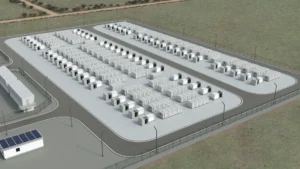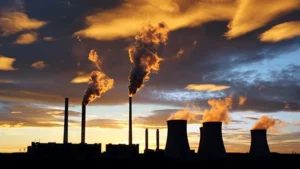Tesla is making enormous strides in the roll-out of its electric vehicle range, with a doubling of sales in the past year and its top-selling Model 3 beating the combined sales of all its petrol and diesel rivals.
But CEO Elon Musk says the company has barely scratched the surface in its goal of transforming the global energy system. It might have turned the motor industry upside down and led to to an unstoppable shift to EVs, but Musk says it needs a step change to do the rest.
Tesla currently produces around 23GWh of battery storage at its Nevada gigafactory – primarily for its EVs, but also for stationary storage, such as domestic Powerwall 2 battery storage unit, and commercial and grid-scale installations such as the Tesla big battery at Hornsdale in South Australia.
Musk says that to make any difference to the global energy system, at least one terrawatt hour of battery storage needs to be produced each year. And how he proposes that is done may well be revealed at an upcoming “battery and powertrain” day, scheduled for early 2020.
“For battery day, we’re going to do a comprehensive review of cell chemistry, module and pack architecture, and manufacturing plans that have a clear map to a terawatt-hour per year,” Musk told investors and shareholders in its June quarter earnings call on Thursday morning (Sydney time).
“We probably need to do a reset. I’m not saying like a Masterplan part three, but in some ways, the battery day will be like Masterplan part three.
“Which is like, how do we get from in the tens of GWh per year to the tens of Terawatt-hours per year? That’s a pretty giant scale increase. It’s an increase of roughly 100. It’s more than that when you think about the factories in Japan. And think about how we get to like 2 terawatt-hours per year.
“In order to really make a fundamental shift in the world’s energy usage and really transform things to a sustainable energy future, if you’re not in the terawatt-hour range, it’s a nice news story, but it’s not fundamentally changing the energy equation.”
Musk has often spoken of stationary storage as the “next big thing”, and even talked of a “mega battery” as the next key scale-busting technology for grid scale storage.
And he has long said his goal is to transform the global energy system, by the use of batteries than can store and balance out the output of solar, and wind energy.
“Our goal is to fundamentally change the way the world uses energy,” he told reporters way back in 2015 as he unveiled the first Powerwall.
Since that time, battery storage costs have fallen dramatically, even if the price of Powerwalls has not – apart from the half price fall implicit in the switch from the Powerall 1 to Powerwall 2.
But batteries – and other forms of storage – are now competing with the traditional fossil fuel peaking plants. Bids combining solar and wind plants with batteries are beating out offers from peaking gas plants, and utilities across the US are choosing “solar peakers” over new gas units.
Even in Australia, the Tesla big battery is proving its worth, delivering essential grid services to the grid, keeping the lights on in major events, destroying the gas cartel that ruled over the frequency and ancillary services market, and making money doing simple arbitrage (charging battery at low prices and selling them at high prices).
The next big thing could come through the Tesla purchase of Maxwell Technologies, a company that specialises in “ultra capacitors” and other battery technologies.
Musk has promised a battery that lasts a million miles, or 1.6 million kilometres, a key component of his vision of having a fleet of electric “robots-taxis”, complete with full self driving, but the issue wasn’t discussed at the earnings call.










